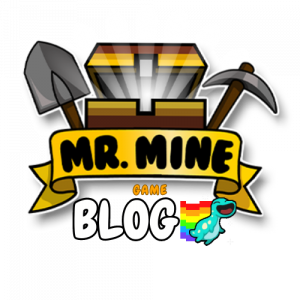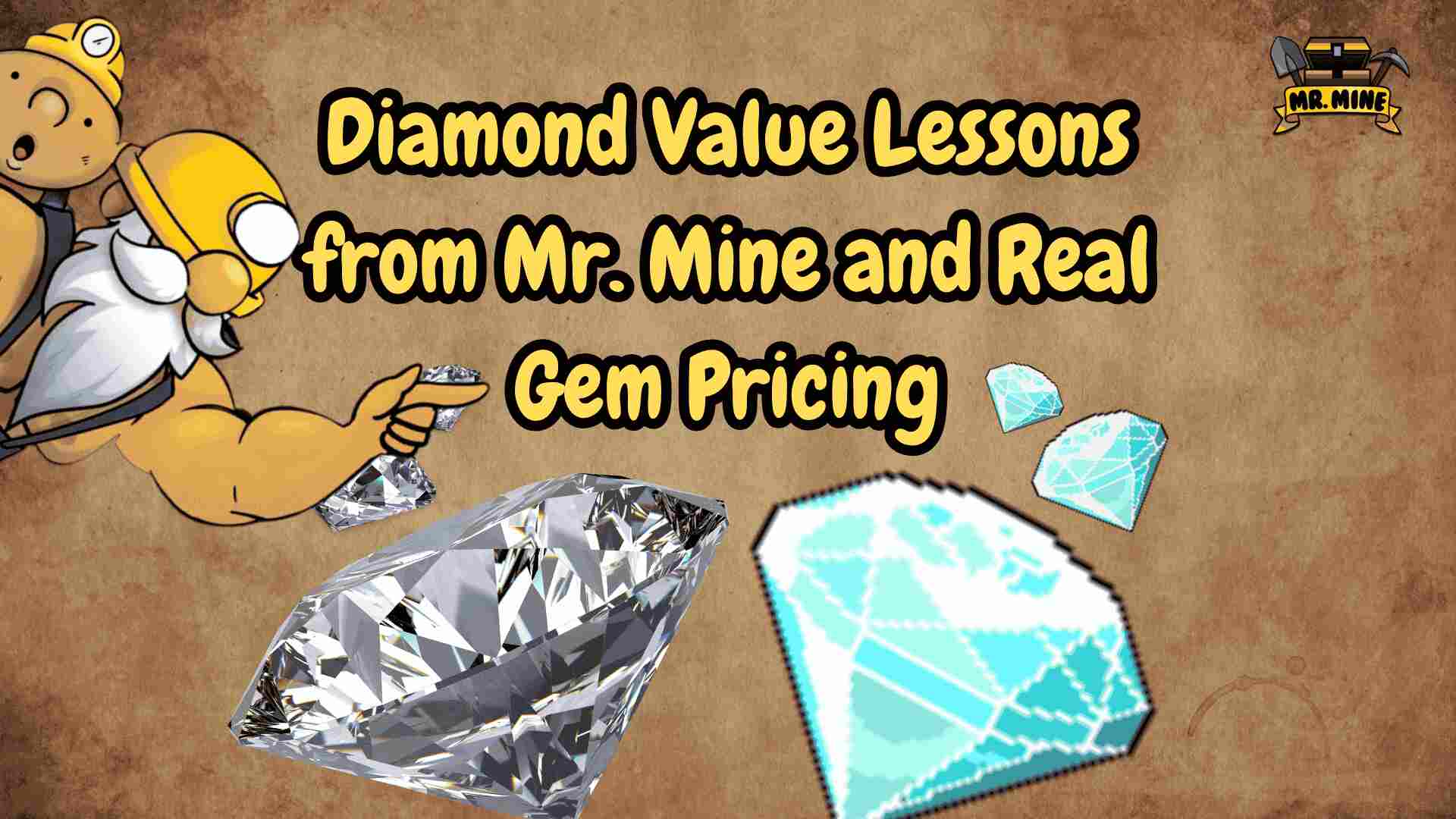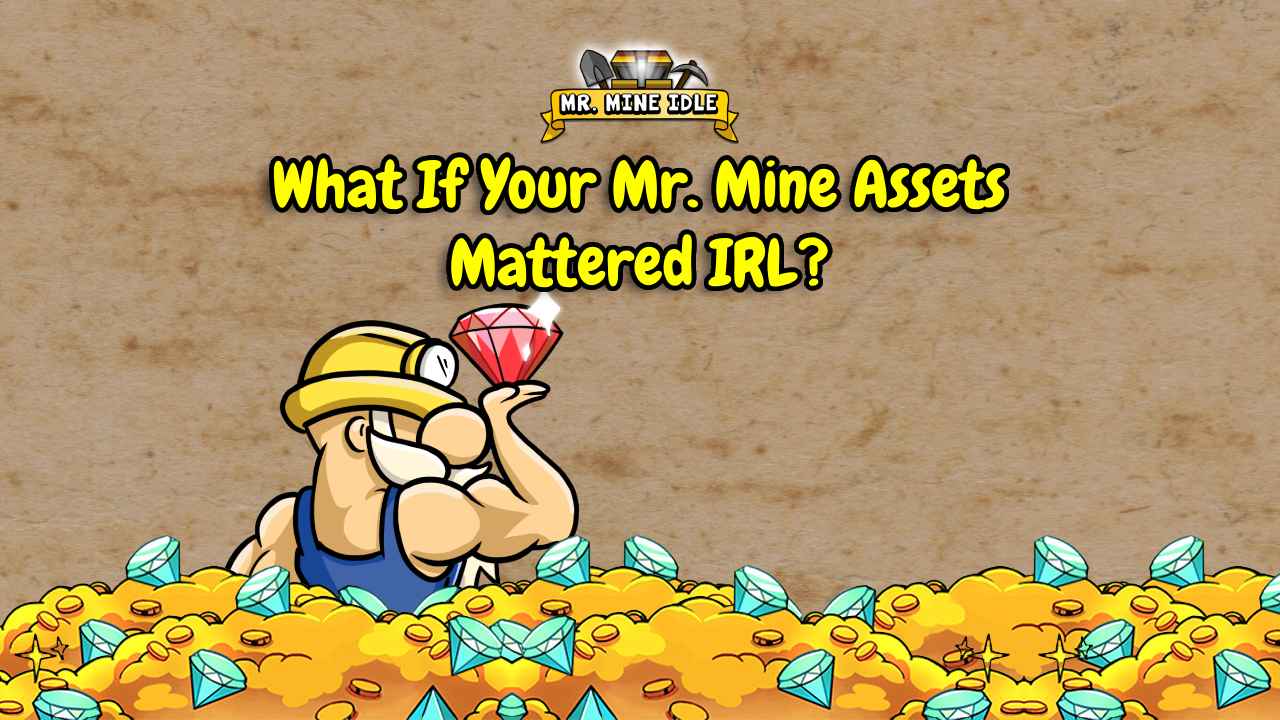What does diamond value mean when you’re deep underground in Mr. Mine versus when you’re shopping for a real gem worth thousands of dollars? It turns out, more than you might think. Whether you’re clicking away in one of the most popular incremental games like mr.mine, or seriously considering a 2-carat sparkler, understanding what gives a diamond its value reveals just how much real-world accuracy this quirky miner game gets right.
This article bridges the glittering world of digital mining games online with the real-world sparkle of natural and lab-grown diamonds, and what they’re truly worth. From the virtual shafts of cool math games mr mine to the display cases of luxury jewelers, we’ll break down how diamonds are valued and how close your in-game hoard comes to fortune.
What Does a “Diamond” in Mr. Mine Represent?

In mr. mine also stylized as mr.mine or mrmine diamonds are one of the rarest resources you’ll dig up. Deep in the subterranean layers of this idle mining game, diamonds represent a high-value, high-rarity resource that players scramble to mine once they reach the right depth.
Diamond Mechanics in Mr. Mine
- Rarity: Players typically begin finding diamonds deep in the 2000m+ layers, indicating they are valuable and limited, much like in real-world geology.
- Value: In the game’s economy, diamonds are often sold for massive coin boosts or exchanged for high-tier upgrades.
- Symbolism: Diamonds are considered “prestige” items in many free mining games, including Mr. Mine. The gem signals you’ve hit a goldmine (pun intended) of resource generation.
Interestingly, this mirrors reality: real diamonds are rare, formed under immense pressure over billions of years, and are historically valued as symbols of wealth and durability.
Real‑World Diamonds – Visuals & Characteristics
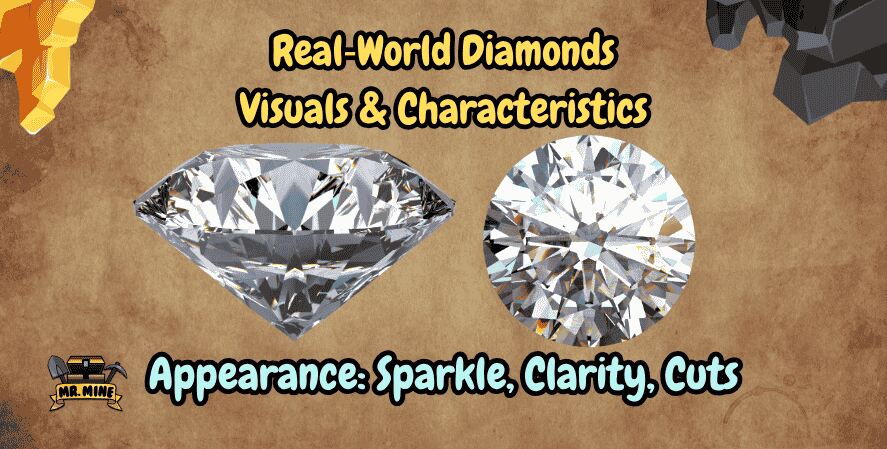
While mister mine simplifies diamonds into glowing white-blue icons, real diamonds are judged using a far more nuanced system. Still, the allure remains the same: sparkle, rarity, and the promise of something timeless.
Appearance: Sparkle, Clarity, Cuts
One of the most compelling aspects of real diamonds is their sparkle, formally known as brilliance. This sparkle comes from:
- Refractive Index: Diamonds bend light at a rate of 2.42 higher than almost any other gemstone.
- Cuts and Facets: Precision cuts (like the round brilliant) maximize internal reflection, giving diamonds their fiery appearance.
- Clarity: Fewer inclusions = more sparkle.
Unlike mining games for free where a diamond is simply an icon, real diamonds come in an array of visual grades from crystal-clear to slightly tinted or included (cloudy).
💡 Fun Fact: Blue diamonds such as the legendary deep-blue stones known worldwide rank among the most uncommon and valuable gems on Earth. The blue diamond value can exceed $3 million per carat.
Quality Factors: The 4 Cs
The diamond value in the real world hinges on what gemologists call the Four Cs:
- Cut: Refers to the precision of the diamond’s shape and how effectively it reflects light.
- Color: Evaluated on a scale from D (completely colorless) to Z (noticeably yellowish). Colorless diamonds are the most valuable.
- Clarity: Internal inclusions or external blemishes reduce value. Clarity ranges from Flawless (F) to Included (I).
- Carat Weight: Bigger is rarer and pricier. But remember: a well-cut smaller diamond often outshines a poorly cut bigger one.
These Cs form the basis for diamond grading reports issued by labs like GIA (Gemological Institute of America).
How Much Do Real Diamonds Cost? Understanding Diamond Value
Diamonds, like any commodity, have pricing tiers based on their quality and demand. Knowing the diamond values per size and grade can help players and buyers alike get a real-world sense of gem worth.
Price per Carat Breakdown
As of 2025, here’s a general guide for average diamond value by carat:
| Carat Size | Price Range (USD) | Average Price |
|---|---|---|
| 0.5 ct | $1,300 – $4,800 | ~$2,400 |
| 1.0 ct | $3,900 – $9,200 | ~$5,800 |
| 2.0 ct | $8,500 – $18,000 | ~$13,000 |
| 5.0 ct | $45,000 – $120,000 | ~$75,000 |
The diamond values here are affected by cut, clarity, and color.
Market Trends 2025
- Premium Grades (D/IF): Often fetch $13,000+ per carat.
- Mid-range (G/VVS2): Hover around $6,000 per carat.
- Commercial Grade (SI1–SI2): Typically sell for $2,300–$3,000 per carat.
Additionally, lab-grown diamonds have disrupted the market, introducing cheaper alternatives that look nearly identical but cost far less.
Comparing Lab‑Grown vs Natural Diamonds
Many mining games online don’t differentiate between lab and natural diamonds but in the real world, this distinction heavily affects diamond value.
| Feature | Lab-Grown | Natural |
|---|---|---|
| Appearance | Identical to natural | Identical |
| Price | ~74% cheaper | Premium pricing |
| Rarity | Manufactured | Naturally rare |
| Origin | Lab (HPHT or CVD) | Earth (billion-year formation) |
Internal Clues: Experts may find growth lines or metallic inclusions in lab diamonds under magnification.
Despite being visually identical, the blue diamond value remains far higher for natural stones due to geological rarity and prestige.
Bringing It Back to Mr. Mine – What Would These Diamonds Be Worth?
Let’s speculate a bit. Suppose your Mr. Mine character finds 100 diamonds during an idle session. What would these be worth in the real world?
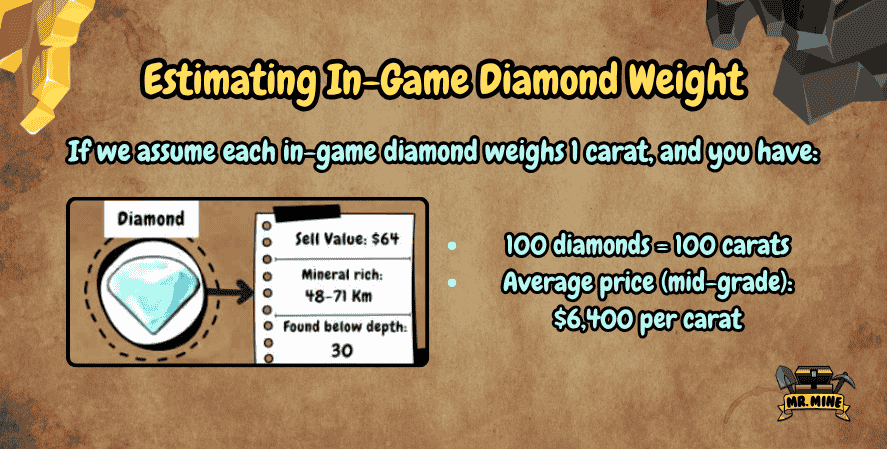
💎 Real-World Diamond Value (Per Carat):
| Grade Type | Average Price per Carat | 100-Carat Total Value |
|---|---|---|
| Commercial Grade (SI1–SI2) | $2,300 | $230,000 |
| Mid-Grade (G–VVS2) | $5,800 | $580,000 |
| Premium (D/IF) | $13,000+ | $1,300,000+ |
Of course, this is a fun conversion and ignores clarity, cut, and so on. But it’s a great way to understand the diamond value behind what seems like just another upgrade item in a space mining game.
How to Buy Real Diamonds with Confidence
While clicking through a mine game is risk-free, real-world diamond purchases need careful attention.
Quick Authenticity Checks:
- Fog Test: Real diamonds disperse heat quickly. They won’t fog up.
- UV Reaction: Some fluoresce blue under blacklight.
- Scratch Test: Only moissanite can rival diamond hardness.
Shopping Tips:
- GIA Certification: Always ask for a certified grading report.
- Compare Price per Carat: Ensure you’re comparing apples to apples.
- Beware of Deals Too Good to Be True: Diamonds have a market floor.
Similarly, just like you wouldn’t waste gold on the wrong upgrade in Mr. Mine, you shouldn’t waste real money on subpar stones.
Conclusion
So, what have we learned about diamond value? Whether you’re mining in Cool Math Games’ Mr. Mine or browsing for an engagement ring, you can appreciate a diamond’s worth by understanding how clarity, cut, color, and carat define its value.
Games like Mr. Mine give players a simplified taste of this value system, yet surprisingly reflect many of the principles behind how diamond values are determined in real life.

